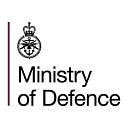NATO’s ‘eyes in the sky’
The Airborne Warning & Control System (AWACS), which can be easily picked out of a crowd with their distinctive radar domes mounted on top, have been keeping watch from high in the sky keeping the Alliance safe and secure for over 30 years.
The AWACS can detect aircraft 400 kilometers away, and build a complete picture of the airspace, including type of aircraft, position and altitude. It can direct airplanes to wherever they need to go and also be sure that they are safe and avoid collisions. A flying air traffic controller if you will.
The uniquely recognisable dome mounted on top is what makes the AWACS special, allowing it to detect air and surface objects over large distances. The dome you can see is its active surveillance sensors, providing the aircraft with 360-degree coverage.
They even keep a close eye on the security of international sporting events — the 2004 Summer Olympic Games in Greece, the 2006 World Cup Football Championship in Germany, the 2012 European Football Championship in Poland.
NATO’s ‘eyes’ provide vital surveillance on a range of missions, from disaster relief to counter-piracy and counter-terrorism. They even keep a close eye on the security of international sporting events — the 2004 Summer Olympic Games in Greece, the 2006 World Cup Football Championship in Germany, the 2012 European Football Championship in Poland.
With over 1,000 flight hours clocked up on counter-ISIS missions, the AWACS plays a key role in providing surveillance and situational awareness in the global efforts to defeat ISIS. The UK and NATO remain committed to tackling terrorism.
The Royal Air Force is one of the key contributors to the AWACS programme. They operate a number of AWACS aircraft from RAF Waddington, which is the hub of UK Intelligence, Surveillance, Target Acquisition and Reconnaissance (ISTAR).
The RAF’s role with the AWACS over the years has been substantial, especially on Operation SHADER over the skies of Iraq and Syria — providing ‘big picture’ situational awareness for our allies.
The AWACS has a long history. Back in the ’60s, it became clear that military aircraft could no longer fly high enough to avoid surface-to-air missiles. Moving into the early ’70s there then became a need for an airborne warning system — The AWACS first entered military service in 1977.
There are 16 member states invested in this project, making AWACS the Alliance’s largest collaborative venture and shows just what can be achieved when members work together. This is one of the few military assets that is actually owned and operated by NATO.
The future of the AWACS looks promising. NATO will tap into the expertise of Alliance industries, which will include a series of industrial competitions to determine the aircraft’s future — ensuring that it meets NATO’s requirements.
To read more about NATO, click below 👇
